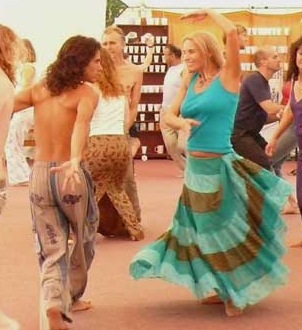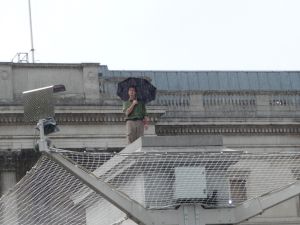![]()
Many alternative health practitioners, therapists and counsellors who need a website to attract clients and maintain credibility do not have one. When I went to set up my own website to promote my growing Reiki practice in 2007 I discovered why. I entered into it expecting the whole thing to be very easy. After all, as a software consultant for a large telecoms firm I was about as tech’ savy as you can get. The internet was invented in 1987 by Tim Bernes-Lee. I had watched it grow. Surely it had been around long enough so that creating a website was now run-of-the-mill. Sadly it turned out not to be. I started my journey by asking my Reiki, psychotherapist and counsellor friends about how they got their website. I was surprised that not one among them said – Oh, it’s easy. Just go to…
Rather they all shook their heads and said things like “It’s a nightmare”, or “I paid someone a fortune, but it took ages, and I don’t really like it” or “I got someone I know to do it, but I’m not really that happy with it”. In fact no one was happy with their website. Not to worry, I thought. I’ll search the web and find out how to create my own. I spent hours on Google finding yet another way to create a website. I tried them all and there are hundreds. It was a very frustrating time but alongside this process I became an expert in important but arcane aspects of the internet. I discovered that simply having a website wasn’t enough. It needed to be found, which meant it needed meta-data descriptions and keywords, and submission to sites such as the open directory project and incoming links and structuring in a search engine readable format and on and on… And as I learned all of this internet black magic I thought “does everyone really need to know all of this stuff? Sure it matters, but isn’t is someone else’s job to make sure that all of this just happens?
Each new way of creating a website has some alluring points, but actually none of them met all of my criteria. I know I can be a bit demanding when it comes to getting the best of all worlds, so I reviewed my criteria. What I wanted from my website service:
1.I wanted my website to be beautiful. It mattered that my website looked good. I have seen a lot of plain websites that appear amateur and can put off potential clients. Google’s offering – brilliant for being free comes into this category, as do many paid for offerings. Worse than being plain, there are many ways to create a website where is possible to create a beautiful website, but only just. In other words, you can get a beautiful website out of them, but only if you have spent many hundreds of hours studying graphic design. These sites include some free ones that appear great at first sight, but their appeal quickly wears off after hours of fruitless and frustrating pushing boxes around. iWeb for apple mac computers wins hands down in it’s ability to produce visually rich, appealing websites that are structurally sound. Sadly you still need to know how to get the website you create from your computer to a server with a domain name of your choosing, and it does not support keyword or description meta-data, embedded HTML or many of the other things that I wanted from a simple website service for my practice.
2.I wanted my website to be affordable. Free was ideal, of course, and I tried all of the free options, but I soon realized that there were some serious flaws here. In some cases what I was being offered for free was supported by advertising, which my clients would have to see each time they visited my site. In others what was being offered didn’t seem like a website at all. Just a bag of bits. I could assemble the bits myself and make a website out of them, but it all seemed very unsatisfactory. In no case with free services were there any real people to help, of course, and none of them included any guidance on that arcane knowledge about how to get found, or where to get good quality images or any of the things that I actually really needed. At the other end of the scale was paying someone to design my website. This can be a good solution if you know and trust the web designer and have between £500 and £3000 pounds to spend. I simply did not want to spend that much on my website. I did not believe it was necessary. That is not to say that a good designer is not worth that and more. There is an absolutely enormous amount of time and skill that goes into creating a bespoke website. From my perspective, this was the problem, that all of that skill had not been captured in a service that could deliver it at the right price. For me I wanted to spend no more than £150 on setting up the site and no more than £15 a month on maintaining it. These seemed like very sensible upper limits.
3.I wanted my website to be simple and flexible. It was important to me that I could edit and change my website as and when I wanted, and that should be simple and easy to do. That way I didn’t need to get it all right in one go. I could get it about right, then go back to it and adjust and grow in a much more organic way in my own time. I knew this simply would not be my experience if I could only make changes by phoning my web designer. I also wanted to be able to see my changes as they would look before I made them public. I wanted to be able to write content without worrying about HTML, the language of the internet, but I also wanted to be able to do all of the modern stuff. Linking to other sites and including photos are obviously requirements but I also wanted to be able to include video, embed from youtube, link to flikr, and include any of the other hundreds of widgets that are to be found on the internet. In other words, I did not want simplicity to mean impossibility.
4.I wanted my website service to be complete. I could see no reason why I, as someone who simply wanted a website, should have to unravel the difference between domain name registrars, hosting companies, web space, website software companies and all of the rest. I didn’t want to have a website and then pay extra to renew a domain name. I didn’t want to end up with a website that didn’t appear on the web, because I hadn’t paid extra for it to be submitted to search engines. I wanted someone else to take care of that, all in one package. Also I did not want to be presented an empty screen when I signed up with the instructions: here you go – make a website. I wanted more that that – something to work from.
Having reviewed my criteria and all of the services currently available I realized pretty quickly that such a thing did not exist. By that time, though, I was committed. If this service did not exist, then it should. It was a strange realization that as a software consultant with 25 years of experience in developing innovative software systems, who also had a passion for alternative therapy and an active practice, who had trained in the art and science of communication and was at that time looking for a way to use my talent in a more holistic balanced way than the telecoms industry offered, that I was almost exactly the person needed to drive the creation of this service. I set to work on almost two years of extensive development effort, with one aim in mind – to produce a way for therapists, counsellors and alternative health professionals to create websites that really served their needs. In other words one that looked great, that clients could find, that practitioners could afford, that was easy to set-up and use even for the those who are the most disinclined towards computers. In other words, websites that make you happy.
What I came up with was the Butterflytent. A website creation service that anyone can use. It is packed with innovations each designed to make the process work smoothly. All with the sole aim of ensuring that when asked about creating a website people say “Oh it’s easy, just go to the Butterflytent.”


















